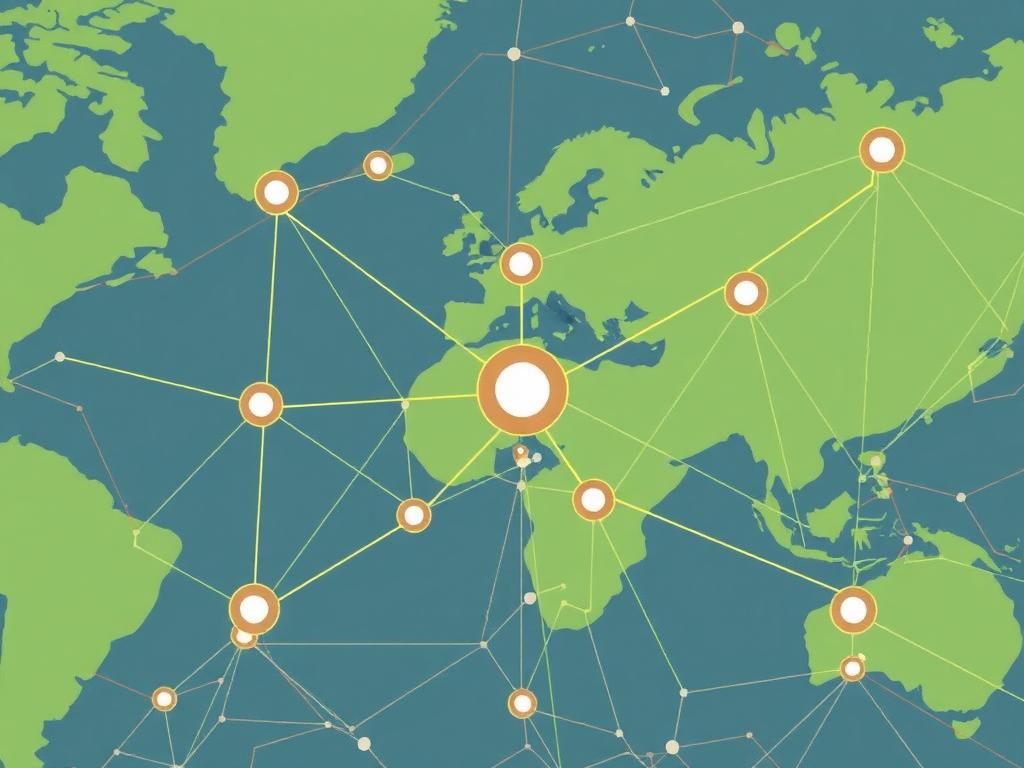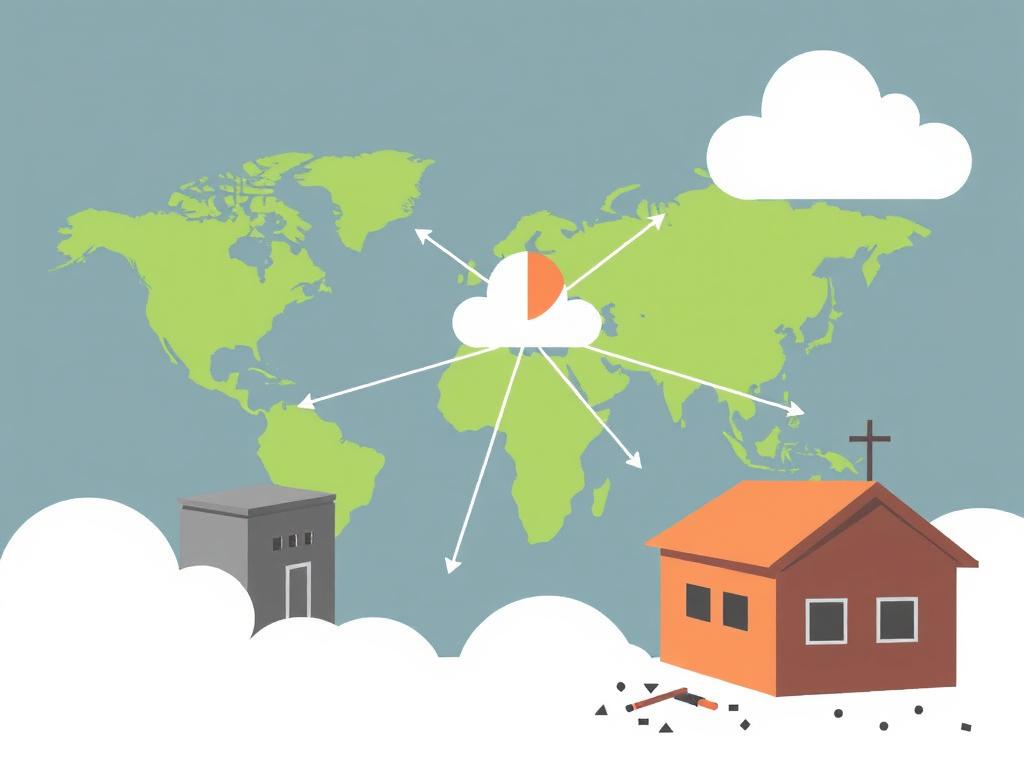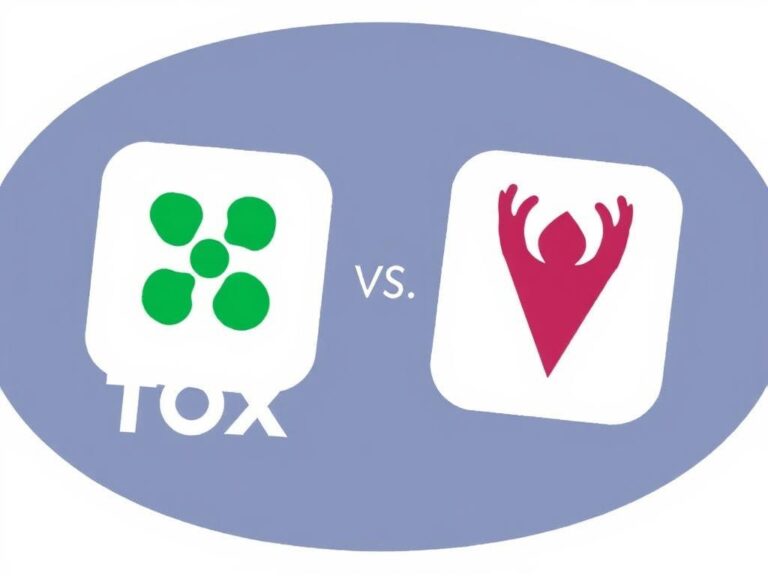Disaster-Proof Communication with P2P Mesh Networks: Staying Connected When It Matters Most
Understanding the Challenge of Communication During Disasters
When a disaster strikes—whether it’s an earthquake, hurricane, wildfire, or flood—one of the most crucial needs is communication. Traditional communication networks, like cellular towers and internet infrastructure, often fail or become severely overloaded in these situations. This loss of connectivity can hinder rescue operations, cut off valuable information, and leave people isolated when they need help the most. This is where P2P mesh networks step into the spotlight, offering an innovative, resilient alternative to keep the lines of communication open despite infrastructure challenges.
What is a P2P Mesh Network?

At its core, a P2P (peer-to-peer) mesh network is a decentralized communication system where devices connect directly to one another rather than relying on central hubs or servers. Imagine a group of smartphones or routers all linked together, passing data from one device to another in a web-like structure. This network is self-healing and flexible: if one device fails or leaves the network, the others can reroute messages automatically. This decentralized nature makes P2P mesh networks ideal for disaster-proof communication.
Key Features of P2P Mesh Networks
- Decentralization: No central point of failure, making the system robust.
- Self-Healing: Automatically reroutes messages if any node goes offline.
- Scalability: Grows organically as more devices join.
- Range Expansion: Multiple hops allow coverage over greater distances without infrastructure.
Why P2P Mesh Networks Are Disaster-Resistant
In disaster scenarios, communication infrastructure such as cell towers, satellites, and landlines often become compromised due to physical damage or overwhelmed networks. P2P mesh networks sidestep this vulnerability by not relying on centralized infrastructure. Each node acts as a relay, passing messages along until they reach their destination. Even if some devices lose power or connectivity, the network remains intact through other devices.
Additionally, these networks can operate without internet access or traditional cellular signals, using Wi-Fi, Bluetooth, or dedicated radio frequencies between devices. This capability ensures that people in disaster zones can still contact emergency responders and loved ones, coordinate aid, and share real-time information.
Common Applications of P2P Mesh Networks in Disaster Management
Many organizations and communities have started adopting P2P mesh networks as part of their disaster preparedness strategies. Here are some of the common ways they’re used:
| Application | Description | Benefits |
|---|---|---|
| Emergency Messaging | Allows individuals to send texts or alerts in areas without cellular coverage. | Reliable communication without dependency on mobile networks. |
| Search and Rescue | Enables rescuers to coordinate their positions and share real-time data. | Improved coordination, faster response times. |
| Community Networking | Local residents create a shared network to spread information and resources. | Builds community resilience and situational awareness. |
| Sensor Integration | Combines environmental sensors with network nodes for monitoring hazards. | Early warning systems and data collection. |
How to Build a P2P Mesh Network for Disaster Preparedness
Creating a P2P mesh network for disaster-proof communication doesn’t require highly technical infrastructure. Here are the basic steps:
- Select Compatible Devices: Devices like smartphones, dedicated mesh routers, or radio modules that support mesh protocols.
- Set Up Mesh Software: Use applications or firmware that enable device-to-device communication, such as Briar, FireChat, or dedicated mesh networking firmware like OpenWRT with mesh extensions.
- Configure Network Settings: Ensure devices can connect automatically and securely, possibly setting encryption keys to protect data.
- Test the Network: Regular drills and simulations to verify connectivity and performance under various conditions.
- Educate Users: Teach community members how to join, operate, and troubleshoot the network in emergencies.
Popular Technologies and Protocols for P2P Mesh Networks
There are various technologies currently powering mesh networking, each with unique strengths depending on use cases.
| Protocol/Technology | Description | Typical Use Case |
|---|---|---|
| Wi-Fi Mesh | Uses Wi-Fi signals for direct device-to-device communication. | Local communications in urban disaster zones. |
| Bluetooth Mesh | Leverages Bluetooth Low Energy for short-range, power-efficient networking. | Smart city sensors, personal messaging networks. |
| LoRa Mesh | Long-range radio communication with low power requirements. | Rural areas and wide geographic coverage. |
| Ad hoc Mobile Networks (MANET) | Dynamic, self-configuring networks among mobile devices. | Disaster response teams and military applications. |
Advantages Over Traditional Communication Systems
Here’s a quick rundown of why P2P mesh networks stand out in disaster communications:
- Resilience: Operates even when cell towers or internet infrastructure go down.
- No Single Point of Failure: Decentralized network minimizes outages.
- Cost-Effective: Uses existing devices; no need for expensive infrastructure deployment.
- Scalable and Flexible: Can expand or contract depending on the number of devices.
- Privacy and Security: Direct device-to-device connections reduce interception risks.
Challenges and Considerations for Disaster-Proof Communication
While P2P mesh networks offer many advantages, there are some challenges to keep in mind:
- Range Limitations: Each device can only communicate within a certain distance, requiring enough nodes to cover an area.
- Power Consumption: Devices need power to stay connected, which might be scarce during prolonged outages.
- Network Congestion: Heavy traffic can slow down data transmission, especially on popular protocols like Wi-Fi.
- User Adoption: Requires people to have compatible devices and the knowledge to use mesh applications.
Planning for these constraints is key to creating an effective disaster-proof communication system.
Looking to the Future: Mesh Networks and Disaster Resilience

The adoption of P2P mesh networks is gaining momentum as technology improves and awareness grows. Innovations such as integrating AI for dynamic routing, enhanced encryption techniques, and combining mesh with satellite communication promise to make disaster communications more efficient and secure. Municipalities, emergency services, and community organizations are increasingly considering mesh networks as part of broader resilience strategies.
Governments and tech companies are now focusing on deploying mesh-enabled devices in vulnerable areas, training first responders, and promoting community mesh networks. Even individuals can contribute by installing mesh apps or devices in their homes. The more interconnected devices operate in these networks, the more robust the communication becomes when it matters most.
Tips for Individuals to Stay Connected with P2P Mesh Technologies
- Download reputable mesh communication apps on smartphones.
- Keep mesh-enabled devices charged and ready for emergencies.
- Participate in community preparedness programs involving mesh networks.
- Learn basic troubleshooting to help maintain the network’s health.
- Share knowledge and awareness to encourage widespread adoption.
Conclusion
Disaster-proof communication is not just a luxury—it’s a critical lifeline when traditional networks fail under pressure. P2P mesh networks present a practical and resilient solution by leveraging decentralization, device-to-device connectivity, and adaptability in the face of adversity. Though they come with challenges like device range and power needs, their advantages of robustness, scalability, and ease of deployment make them invaluable for disaster preparedness and response. As technology evolves and communities become more mesh-savvy, these networks will play an increasingly vital role in saving lives, coordinating relief efforts, and keeping people connected when it matters the most. Embracing P2P mesh networks today means building a more disaster-resilient tomorrow.






